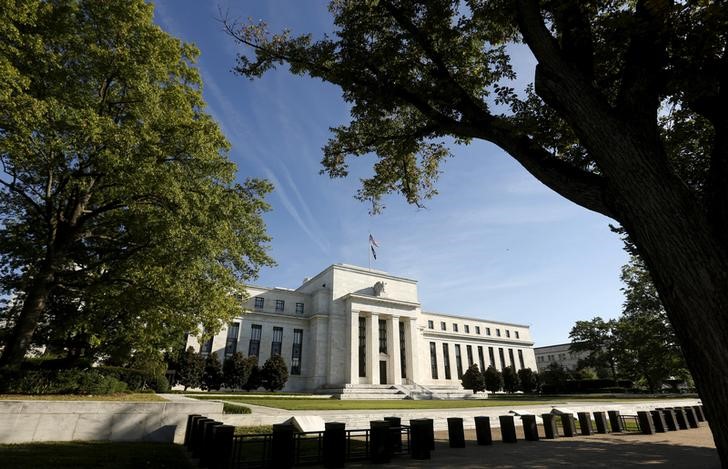 © Reuters. FILE PHOTO: The Federal Reserve building in Washington
© Reuters. FILE PHOTO: The Federal Reserve building in WashingtonBy Lindsay Dunsmuir and Jason Lange
WASHINGTON (Reuters) – U.S. Federal Reserve policymakers showed worry over the fate of currently low inflation and saw recent tax changes as providing a boost to consumer spending, according to the minutes of the U.S. central bank’s last policy meeting on Dec. 12-13 released on Wednesday.
The details of the meeting, at which the Fed raised interest rates for the fifth time since the 2008 financial crisis, also showed that officials have a similar lack of certainty over the impact of fiscal stimulus on raising price pressures.
“Most participants reiterated their support for continuing a gradual approach to raising the target range, noting that this approach helped to balance risks to the outlook for economic activity and inflation,” the Fed said in the minutes.
They then mulled the dual possibilities that the Trump administration’s tax cuts or easy financial conditions could cause inflation pressures to build unduly, while at the same time also considering that actual or expected inflation may fail to rise to the Fed’s 2 percent target.
The inflation shortfall is set to dominate incoming Fed Chair Jerome Powell’s first few months as chief of the central bank with further rate increases more difficult to justify without an upswing. He is set to take over from Janet Yellen by the time of the next rate-setting meeting on Jan. 31-Feb. 1.
At its December meeting, the Fed kept its forecast for three rate rises this year and in 2019 unchanged even as policymakers anticipated a short-term boost in U.S. economic growth from the Trump administration’s sweeping $1.5 trillion tax overhaul signed into law on Dec. 22.
The tax changes reduce the corporate rate from 35 percent to 21 percent and temporarily cuts the taxes paid by most individuals as well.
In the minutes, many policymakers “expected the proposed cuts in personal taxes to provide some boost to consumer spending” and many characterized the changes in business taxes as likely to provide a modest boost to capital spending.
“However, some business contacts…noted that the increase in cash flow that would result…was more likely to be used for mergers and acquisitions or for debt reduction and stock buybacks,” the minutes said.
In December, the Fed forecast ultra-low unemployment of below 4 percent in 2018 and 2019, but still predicted inflation would remain below 2 percent at the end of 2018.
The mystery of low inflation in such a robust economy has prompted debate at the Fed for the past several months and was the concern of the two policymakers who voted against a rate increase at last month’s meeting.
The latest minutes showed that while participants generally viewed inflation rising back to target over the medium term, several said “other persistent factors may be holding down inflation.”
Investors have all but ruled out an interest rate increase at the Fed’s upcoming meeting but currently see another nudge upwards at the following one in March.
Fusion Media or anyone involved with Fusion Media will not accept any liability for loss or damage as a result of reliance on the information including data, quotes, charts and buy/sell signals contained within this website. Please be fully informed regarding the risks and costs associated with trading the financial markets, it is one of the riskiest investment forms possible.
Source: Investing.com



























